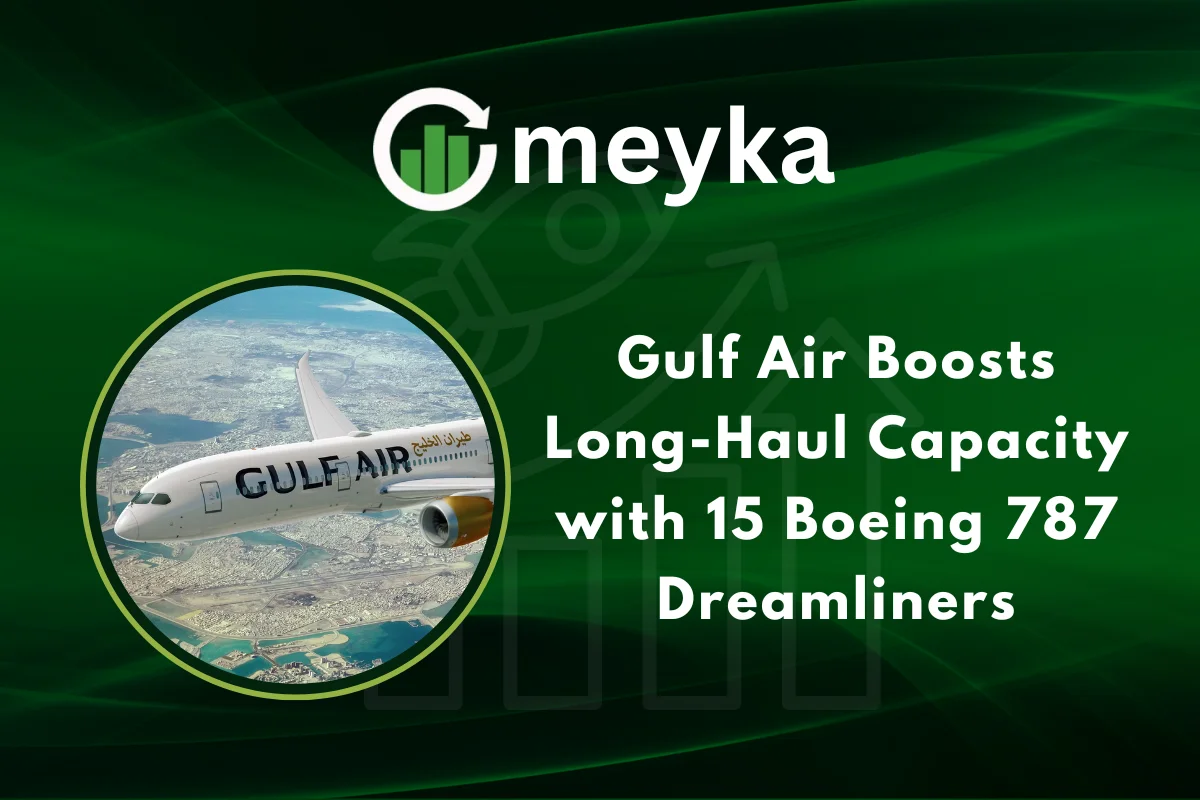Gulf Air Boosts Long-Haul Capacity with 15 Boeing 787 Dreamliners
Gulf Air, the national airline of Bahrain, has announced a major expansion of its long-haul fleet by placing a firm order for 12 Boeing 787 Dreamliners, with options for six more, potentially raising the total to 18 new widebody aircraft. This move, which reflects a strong push to modernize and scale up its premium long-haul services, marks a new chapter in Gulf Air’s strategy to grow its international network.
A Strategic Expansion for Global Reach
The deal was officially signed in July 2025 in a ceremony featuring top-level leadership, including Gulf Air Group Chairman Khalid Taqi, Bahrain’s Minister of Finance and National Economy, Shaikh Salman bin Khalifa Al Khalifa, and U.S. Commerce Secretary Howard Lutnick. Gulf Air stated that adding Dreamliners will help it expand its global footprint, particularly on long-distance routes, and reinforce its long-haul capabilities.
Already operating 10 Boeing 787-9s, Gulf Air plans to make the Dreamliner the backbone of its broadbody fleet. These aircraft are known for being fuel-efficient, comfortable for passengers, and capable of flying long distances, making them ideal for international expansion.
Why the 787 Dreamliner Matters for Gulf Air
The Boeing 787 Dreamliner is a modern widebody jet that offers several advantages, and Gulf Air sees these as aligned with its growth goals:
- Fuel Efficiency: The 787 is built with lightweight composite materials. This helps reduce fuel consumption, which is key for long-haul operations.
- Range & Reach: With the Dreamliner’s long range, Gulf Air can reach distant markets in Asia, Europe, and North America more easily.
- Passenger Experience: The aircraft features large windows, better cabin air pressure, and lower cabin altitude, which together make flying more comfortable.
- Sustainability: More efficient aircraft support Gulf Air’s long-term sustainability goals by reducing emissions per passenger.
Economic and Geopolitical Impact
The deal is not just about fleet growth; it also has broader economic implications. According to Boeing, the order supports 30,000 U.S. jobs, underlining the deal’s significance beyond aviation.) On Gulf Air’s side, the investment signals its ambition to position Bahrain as a major aviation hub and enhance its role in global trade and travel.
For Gulf Air, this expansion could translate into:
- More direct long-haul routes, reconnecting Bahrain to global markets.
- Improved service frequency and more competitive offerings compared to other Gulf carriers.
- A modern fleet that can attract premium passengers and long-haul travelers.
Challenges and Risks
While the fleet expansion is ambitious and promising, Gulf Air faces several challenges:
- Execution Risk: Scaling up with up to 18 widebody jets means Gulf Air must support operations, crew training, and new maintenance logistics.
- Demand Uncertainty: Long-haul demand can be volatile, especially given economic cycles, fuel price fluctuations, and geopolitics.
- Competition: Gulf Air competes with major Gulf carriers that already have large widebody fleets and extensive global routes.
- Financing: The cost of acquiring, operating, and maintaining Dreamliners is high; Gulf Air must ensure its financial model supports this investment.
What This Means to Passengers
Passengers stand to benefit in real ways:
- More Destinations: As Gulf Air expands, travelers from Bahrain may see new nonstop or direct flights to far-off international cities.
- Better Comfort: The 787’s advanced cabin design means a smoother, quieter flight experience.
- Potentially Lower Fares: Efficiency gains from newer aircraft could help Gulf Air offer more competitive pricing on long-haul services.
- Improved Reliability: A modern, homogeneous widebody fleet can mean better scheduling, maintenance, and reliability.
Implications for Aviation and Markets
In the aviation industry, Gulf Air’s deal strengthens Boeing’s position and signals continued demand for widebody aircraft. The expansion also reflects broader trends:
- Fleet Modernization: Many airlines are replacing older aircraft with more efficient models.
- Growing Long-Haul Traffic: Long-haul travel remains a key growth area, especially from the Gulf region.
- Sustainability Focus: As airlines invest in newer, cleaner aircraft, there’s a clear push toward reducing emissions.
From a stock market perspective, this could be a positive for Boeing (NYSE: BA). The strong order reflects confidence in Boeing’s product line and may be seen as a bullish sign in stock research circles, especially for investors watching aerospace and long-term capital goods. For Gulf Air, though not publicly traded, this order underscores its commitment to growth and long-term strategy.
Looking Ahead
To fully realize this long-haul expansion, Gulf Air will need to:
- Finalize the options for the additional six Dreamliners.
- Plan and launch new routes to maximize the utility of its expanded fleet.
- Invest in crew, infrastructure, and ground operations to support more widebody flights.
- Market its long-haul service aggressively to attract new customers and retain existing ones.
As the global aviation landscape evolves, Gulf Air’s bold move could prove pivotal in transforming it into a stronger international player.
Conclusion
Gulf Air’s decision to expand its fleet with 15 new Boeing 787 Dreamliners marks a major step forward in its long-term growth strategy. The airline is investing in fuel-efficient technology, stronger global connectivity, and a better travel experience for passengers. This expansion also strengthens its competitive position in the global aviation and stock market landscape, attracting attention from investors who follow aviation trends, AI stocks, and broader stock research.
As Gulf Air continues to modernize its operations, the airline is preparing for a future where efficiency, comfort, and international reach will play an even bigger role.
FAQs
Gulf Air wants to expand its long-haul network, improve efficiency, and modernize its fleet. The 787 is ideal for long flights and offers better fuel economy, helping Gulf Air serve more distant destinations reliably.
Yes, the 787 is known for passenger comfort (large windows, better cabin air) and fuel efficiency. These benefits could allow Gulf Air to maintain competitive pricing while offering an enhanced flying experience.
The main risks include demand volatility for long-haul travel, the high cost of operating widebody planes, and the challenge of scaling up operations (training, maintenance, crew). If demand doesn’t grow as expected, Gulf Air could face financial strain.
Disclaimer:
The content shared by Meyka AI PTY LTD is solely for research and informational purposes. Meyka is not a financial advisory service, and the information provided should not be considered investment or trading advice.






